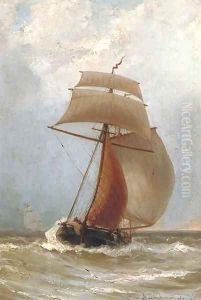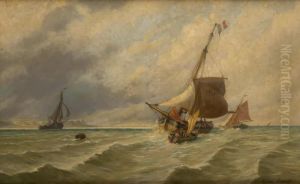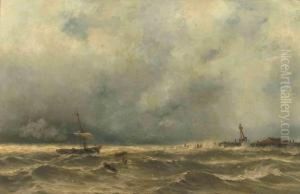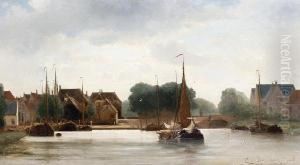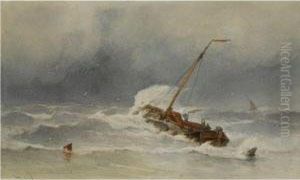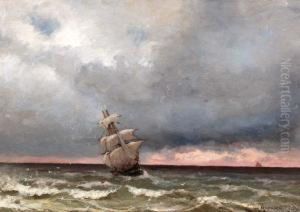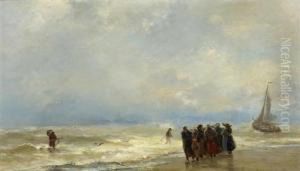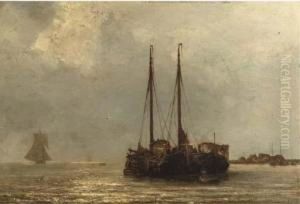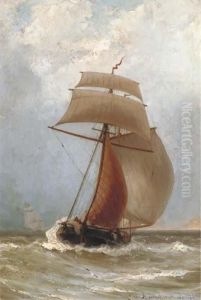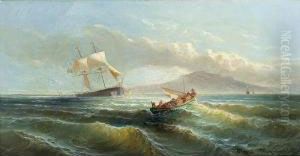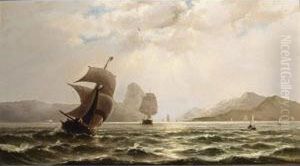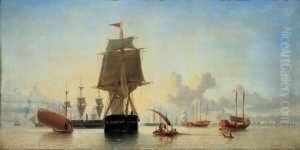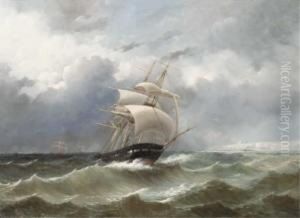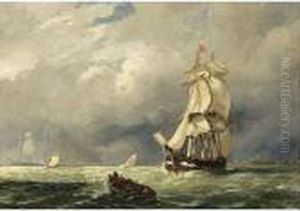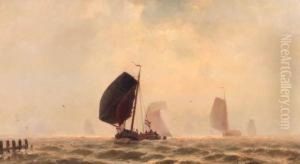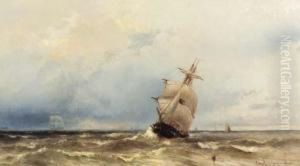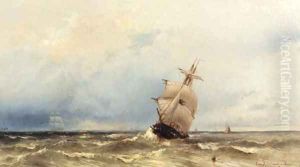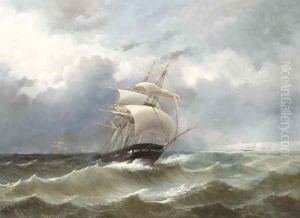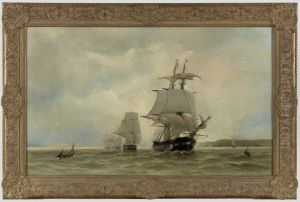Jacob Eduard Van Heemskerck Van Beest Paintings
Jacob Eduard van Heemskerck van Beest was a Dutch marine artist born in Rotterdam, Netherlands, in 1828. He is particularly remembered for his detailed and atmospheric depictions of naval battles and marine landscapes. Coming from the Netherlands, a country with a rich maritime history, van Beest was deeply inspired by the sea and ships, which became the central theme of his artistic career.
Van Beest's early life was marked by his engagement with the Dutch Navy, where he served for several years. This experience provided him with firsthand knowledge of ships and the sea, elements that would later become crucial in his artistic work. After leaving the navy, he dedicated himself entirely to painting, honing his skills and developing a distinctive style characterized by precise detail, dramatic lighting, and a deep understanding of maritime subjects.
Throughout his career, van Beest exhibited his work in various cities across Europe, gaining recognition and accolades for his contributions to marine art. His paintings were celebrated for their realism and ability to capture the mood and movement of the sea. He was particularly adept at portraying the dynamic interaction between ships and the ocean, often depicting scenes of naval warfare, bustling harbors, and tranquil coastal landscapes.
Despite his success, van Heemskerck van Beest's life was not without challenges. He faced the typical struggles of an artist of his time, including financial instability and the pressure to continually produce works that would appeal to patrons and the art market. However, his dedication to his craft and his passion for the sea sustained him throughout his career.
Jacob Eduard van Heemskerck van Beest passed away in 1894, leaving behind a legacy that has continued to influence marine artists. Today, his works are held in high esteem and can be found in several prominent art collections and museums around the world. His contribution to the field of marine art is significant, as he captured the essence of the maritime experience in a way that few artists of his time could. His paintings not only serve as historical records of naval architecture and maritime culture of the 19th century but also as a testament to the enduring beauty and power of the sea.
